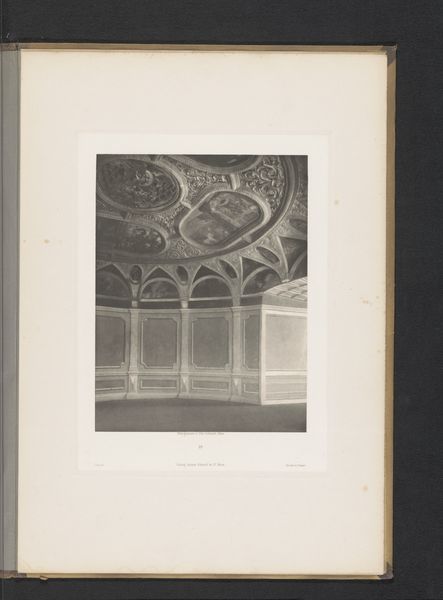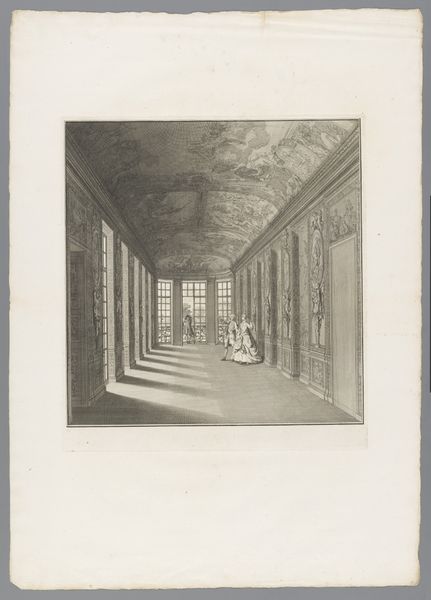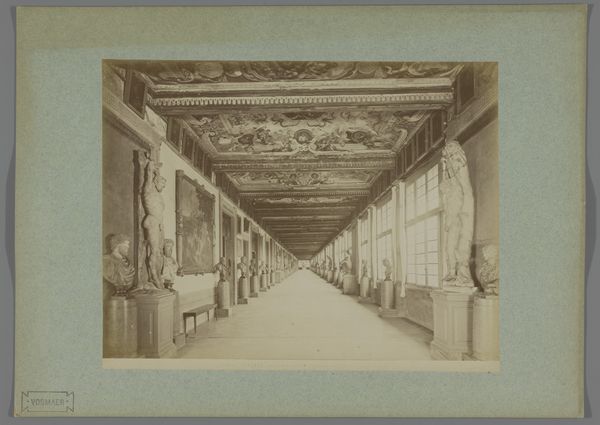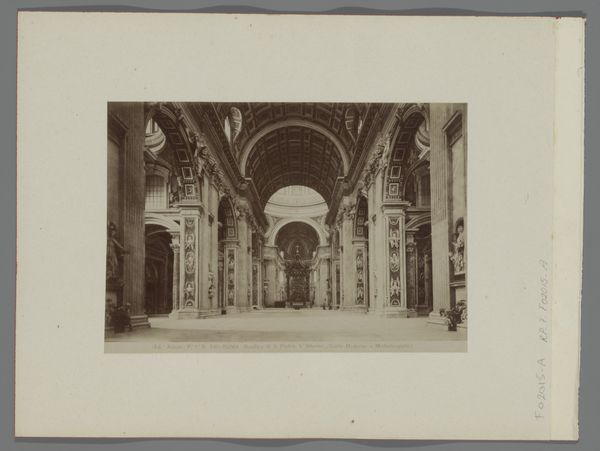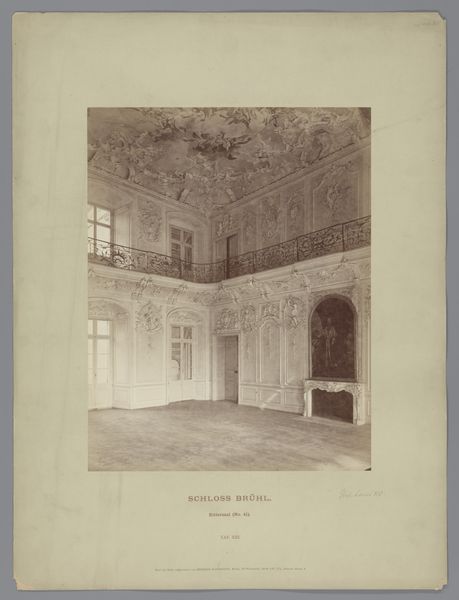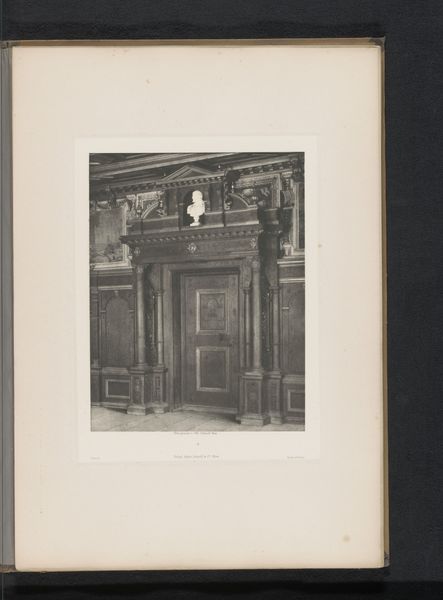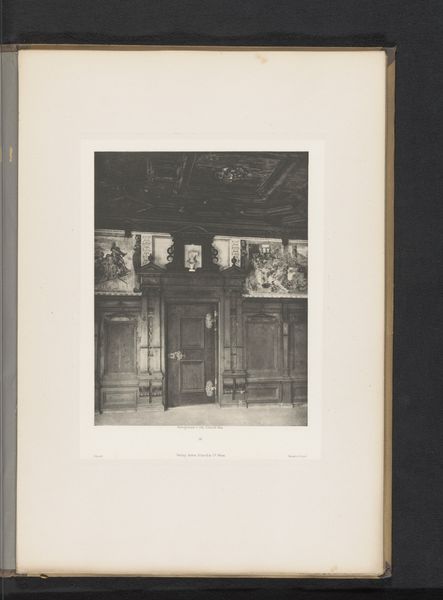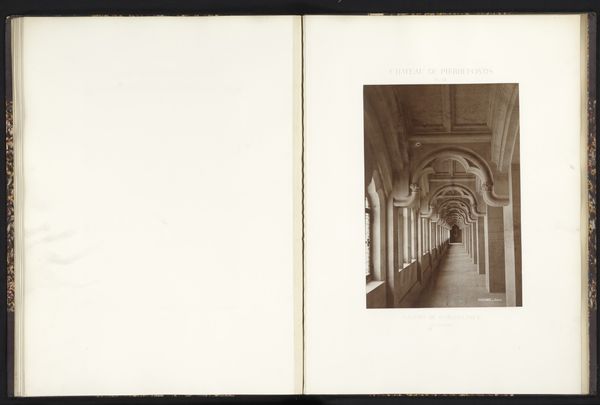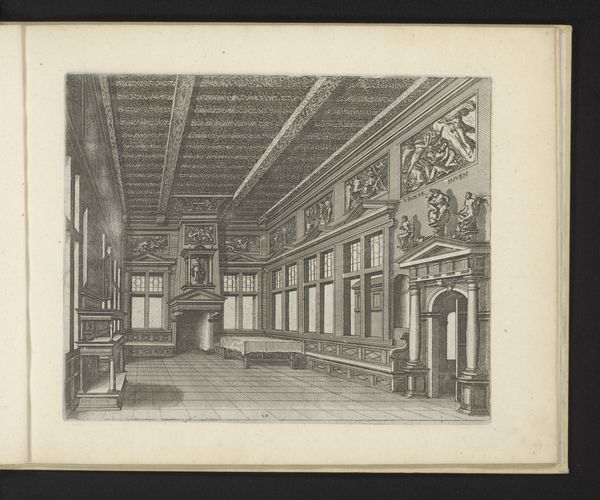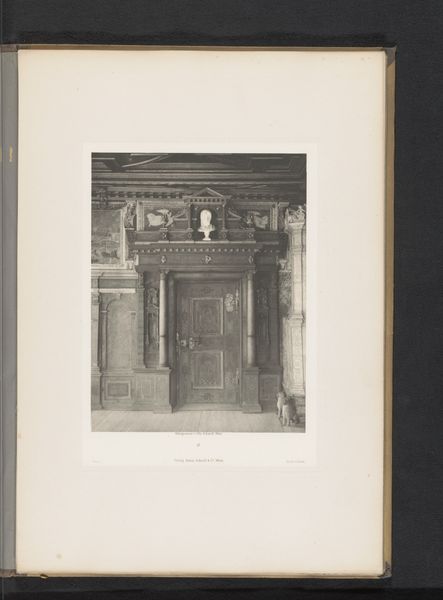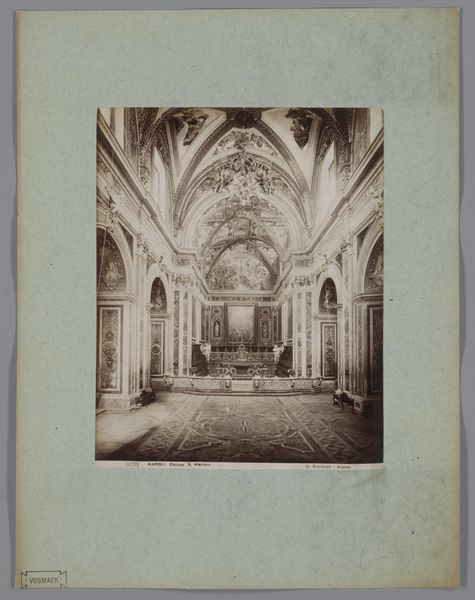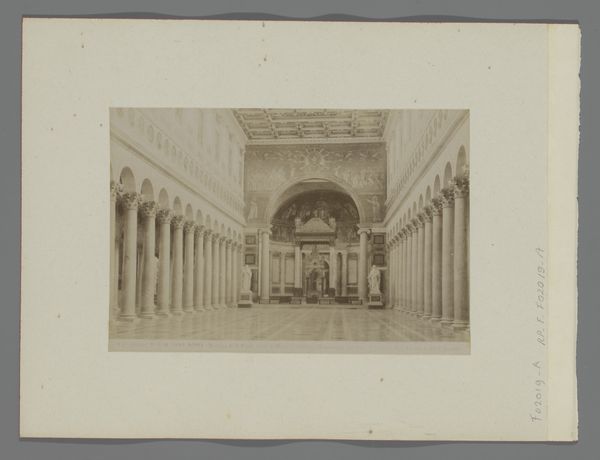
Dimensions: height 234 mm, width 184 mm
Copyright: Rijks Museum: Open Domain
Curator: Here we have an early print, a photographic piece titled "Gezicht op de ridderzaal van de Trostburg in Ponte Gardena, Italië," or "View of the Knight's Hall of Trostburg Castle in Ponte Gardena, Italy." It’s attributed to Otto Schmidt, dating from before 1891. Editor: Oh, my! What a cavernous space! That incredible ceiling design just drags your eye upward, like some sort of Escher puzzle rendered in wood. The monochrome palette gives it a timeless, almost spectral quality. Curator: Absolutely. The image resonates with the stylistic leanings of Romanticism, evidenced not only through the dramatic perspective, but also by the artist’s focus on architecture as a manifestation of historical and cultural power. The absence of human figures subtly shifts our attention to the socio-political contexts ingrained within such structures. Editor: Right, I see that! I’m thinking about echoes, though. The quiet majesty captured here suggests lives lived and dramas played out, now reduced to reverberations within stone. Are those...statues, sort of guarding the entryway in the back? Curator: Precisely. Those classical figures reinforce the castle's position within a European history often framed by dynastic power and aristocratic privilege. This connects with narratives regarding imperialism and questions surrounding who gets to author and occupy historical narratives. The use of photography here seems very pointed as a technology able to document the spoils. Editor: Hmmm... I get the academic angle, for sure, but the visual language, to me, suggests something more introspective. The black and white treatment has a way of pulling me out of myself into the past, and into this strange place of silent wonder. Like a moment suspended… It asks you, ‘What will persist after you?’ Curator: That’s beautifully articulated. And thinking about its potential persistence—considering the photograph itself as artifact—that provides us insight into not only a place, but how that place has been consumed, even idealized, through photography as a means of cultural preservation and artistic expression. Editor: You know, for something so seemingly rigid in its subject—stone and history and whatnot—I find it profoundly emotive. Anyway, maybe this space made people like me back then to pause for the beauty, too? It's strange to realize that. Curator: Yes! The way the print invites consideration of how structures endure versus how perceptions of those structures transform… Fascinating. Editor: Absolutely. It really encourages one to let their imagination roam among old stones and older stories. I'm grateful for moments that allow you to wonder, truly wonder about things that lasted much longer than ourselves.
Comments
No comments
Be the first to comment and join the conversation on the ultimate creative platform.
